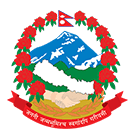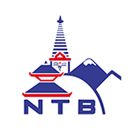Archives: FAQ
Can I trek Annapurna Base Camp during the monsoon season?
During the monsoon season, from June to mid-September, heavy rainfall and the potential for landslides are common. Trails may become slippery, and mountain views can be hidden by clouds. Therefore, we do not recommend trekking during this period.
Can I extend the Annapurna Base Camp trek to other areas or combine it with other treks?
Yes, the Annapurna region has numerous trekking options. You can extend your trek to include the Annapurna Circuit or explore nearby destinations such as Ghorepani and Poon Hill.
What is the daily trekking distance and duration for the Annapurna Base Camp trek?
On average, you’ll trek for 5-7 hours each day, covering about 10-15 kilometers (6-9 miles). The exact distance and duration may vary depending on your pace and the itinerary you choose.
Can I join a group trek to Annapurna Base Camp?
Nepal Sanctuary Treks does not offer fixed departure group treks. However, we are more than happy to arrange private and customise treks for solo travelers, families, or small groups based on your preferences. For more information please email us at info@nepalsanctuarytreks.com
Are there health risks or concerns about altitude sickness on the Annapurna Base Camp trek?
Altitude sickness can be a serious risk for trekkers at high elevations, so it’s important to acclimatize properly. Start slowly to give your body time to adjust, and stay hydrated, as dehydration can worsen symptoms. Watch for signs of altitude sickness, like headaches, nausea, and dizziness. Consulting a healthcare professional before your Nepal trek can provide helpful advice for a safer experience. The team at Nepal Sanctuary Treks carries a portable altitude chamber (PAC), an oximeter, and the Lake Louise form during the trek. They monitor each traveler’s condition and track their progress. Additionally, the expert team at Nepal Sanctuary Treks carefully designs itineraries that include acclimatization days, allowing trekkers to gradually adjust to the changing altitude. These carefully planned rest days are strategically placed throughout the trek to help minimize the risk of altitude sickness. . Read more on Altitude Sickness
What is the altitude of Annapurna Base Camp?
Annapurna Base Camp is positioned at an altitude of approximately 4,130 meters (13,550 feet) above sea level. This elevation places you in the heart of the Himalayas, offering stunning views and a unique trekking experience amid the majestic peaks. Popular trails link iconic locations like Poon Hill, Machhapuchhare Base Camp, and the highest point on the trek, Annapurna Base Camp (ABC), at 4,130 meters above sea level.
What can you expect for accommodation on the Annapurna Base Camp Trek?
On the Annapurna Base Camp trek, accommodation primarily consists of teahouse lodges built from stone and wood. The rooms are typically twin-share, featuring two single beds each. To ensure comfort in the cold Himalayan weather, it’s highly recommended to bring a sleeping bag rated for temperatures as low as -20°C, even though the lodges provide one or two blankets. Sleeping bags can be rented in Kathmandu for around $1-$1.50 per day. Nepal Sanctuary Treks selects the best lodges along the trail to enhance your trekking experience.
What permits are required for the Annapurna Base Camp trek?
You need Annapurna Conservation Area Permit (ACAP) and a Trekkers’ Information Management System (TIMS) card. Nepal Sanctuary Treks will handle the arrangements for these permits.
How difficult is the Annapurna Base Camp trek?
The Annapurna Base Camp Trek is classified as moderate, ideal for those with a reasonable level of fitness. The trek features some steep ascents and descents but does not demand technical climbing expertise.
What temperatures can you expect during the Annapurna Base Camp Trek?
|
Month |
Max Temperature (°C) | Min Temperature (°C) |
| March | 4 |
-8 |
| April | 8 |
-4 |
| May | 14 |
0 |
| June | 16 |
3 |
|
July |
18 | 6 |
|
August |
19 |
7 |
|
September |
20 |
0 |
|
October |
16 |
-6 |
| November | 11 |
-10 |
| December | 9.3 |
-14 |
| January | 7 |
-19 |
| February | 6 |
-20 |
When is the best time to undertake the Annapurna Base Camp trek?
The optimal times for the Annapurna Base Camp trek are during the pre-monsoon (spring) season from March to May and the post-monsoon (autumn) season from September to November. These periods provide the best weather conditions and the clearest views of the mountains.
What is the duration of the Annapurna Base Camp Trek?
What is the cost of the Annapurna Base Camp trek?
The cost can vary widely based on customized itineraries. For more detail, please contact our expert.
Is it possible to extend the trek to other areas or combine it with other treks?
Yes, the Annapurna region offers various trekking routes. You can extend your journey to include the Annapurna Circuit or other nearby destinations like Ghorepani and Poon Hill.








